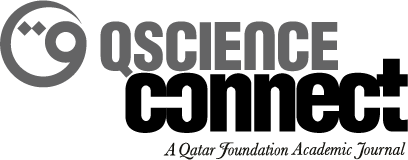- Home
- A-Z Publications
- QScience Connect
- Previous Issues
- Volume 2021, Issue 3
QScience Connect - Issue 3 -Tenth International Translation Conference
Issue 3 -Tenth International Translation Conference
-
Editorial for the Tenth International Translation Conference: Translation Beyond the Margins-Doha, 26–27 March 2019
More LessIt is my pleasure and honor to present the proceedings of the 10th International Translation Conference, which are the result of a careful selection by peer reviewers. This special issue in QScience Connect Journals is dedicated to the papers submitted to the 10th International Translation Conference “Translation Beyond the Margins.” The Call for Papers for this conference invited contributions that fit in the following thematic area: “Transla Read More
-
Beyond localization: Making learning spaces accessible to all
More LessWhen addressing localization within Translation Studies, we think of translating web content for a new linguistic and cultural reality. At times, localization is seen as making a text “adequate” to the new readership taking into account local sensitivities and requirements. When the addressees of a given web-based product have a disability, localization alone will not be sufficient to guarantee true access, for the needs and requirements will ent Read More
-
The visual aspect in the transfer – translation of the cultural code
More LessThis article presents the adaptation of the visual elements and how the illustrations have been adapted to fit new cultural and social context. The Swedish original of Astrid Lindgren’s book and the Polish translation will serve as the research material. In the current analysis of the graphic aspect of Astrid Lindgren’s books published in Poland, Edwin Panofsky’s iconological approach to the image is combined with Roland Barthes’ semiotic a Read More
-
The challenge of quality management in crowdsourced translation: the case of the NGO Translators Without Borders
More LessThe rise of machine translation and translation memories along with the technologies of the Web 2.0 have brought about new flavours and workflows, setting new challenging research pathways for translation studies. Emerging crowdsourcing-based models have been presented as defacto mainstream approaches in the translation industry. Therefore, exploring the newborn approaches and processes is a priority for translation studies for bet Read More
-
Captioning the occupation: The role of textual elements in the process of building national narratives in historical museums
More LessBackground: After the dissolution of the Soviet Union, in the ideology vacuum it left behind, the question of national identity became one of great importance. Adopting the Benedict Anderson constructivist idea that nations are imagined – or socially constructed communities that have to be continuously reproduced in order to exist, we aim to analyse whether and in what ways historical and archaeological museums can serve as t Read More
-
Framing the societal value of community interpreting
More LessAfter presenting the concept of communicative autonomy and how it can help professionals with ethical decision-making (micro), I draw on two different visual examples to analyze framing strategies for the profession by society at large (macro). One strategy relies on experiences of identity and belonging, while the other moves away from considerations of identity. I discuss what their respective advantages and disadvantages might b Read More
Most Read This Month
Article
content/journals/connect
Journal
10
5
true
en


